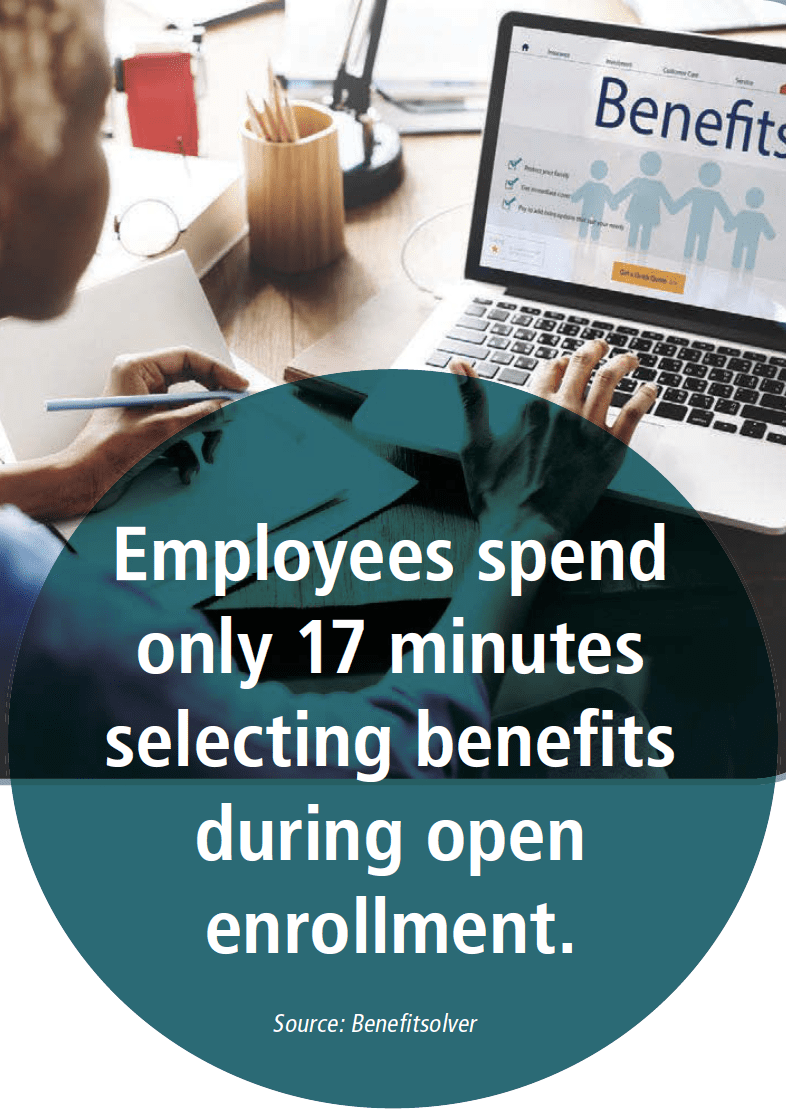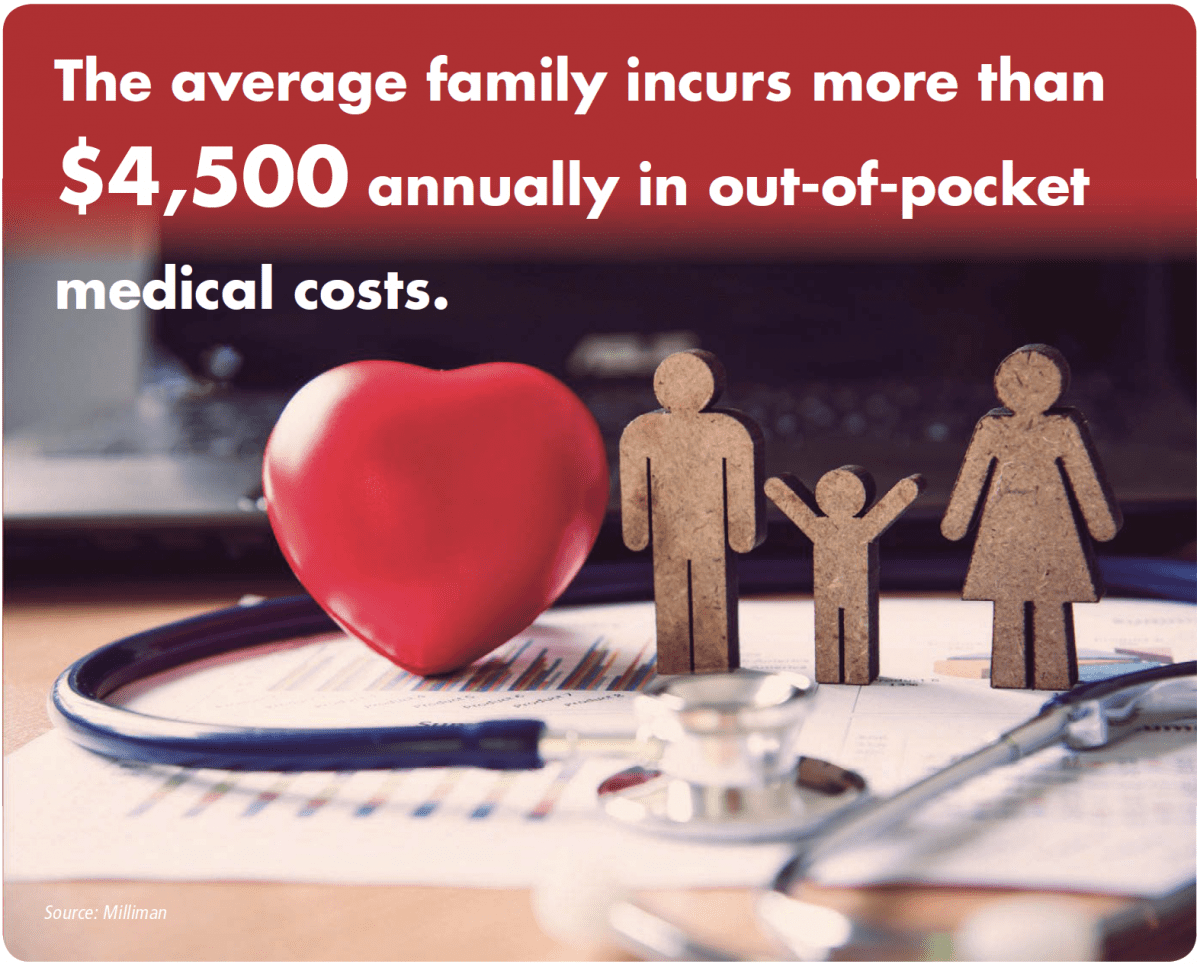Strategies that encourage proactive employee participation during open enrollment.
By Rob Grubka
During open enrollment season, employees have to choose from an average of 15 benefits, at least three of which are healthcare insurance. And according to PlanSource, that number is even higher at larger organizations. With competing demands on employees’ time, many workers opt to simply stick with the same benefits year after year or choose only their basic medical, dental, and vision insurances, skipping over valuable supplemental benefits that can have a true impact on their financial wellness.
Employers are increasingly recognizing the value of their benefits offerings in helping employees balance the many financial and other pulls on their attention. This should be comforting, knowing how much due diligence is required to review benefits providers and add them to a benefits platform. The challenge now is to draw employees’ attention to the solutions available to them and help them choose the right benefits to meet their needs today and, perhaps equally importantly, in retirement.
Engage and Empower
 A recent Benefitsolver study found that, on average, employees spend only 17 minutes selecting benefits during open enrollment. Considering the average number of benefits offered, that means employees are spending one minute or less learning or thinking about each benefit. In contrast, Netflix users spend an average of 18 minutes of any given day deciding what to watch, according to Reelgood and Learndipity Data Insights.
A recent Benefitsolver study found that, on average, employees spend only 17 minutes selecting benefits during open enrollment. Considering the average number of benefits offered, that means employees are spending one minute or less learning or thinking about each benefit. In contrast, Netflix users spend an average of 18 minutes of any given day deciding what to watch, according to Reelgood and Learndipity Data Insights.
Making the benefits enrollment process less passive is a good way to begin to address the challenge. For example, have employees opt-out of certain benefits rather than opt-in. This often leads employees to read more about each benefit. At the same time, messages need to be in “Saturday language” rather than “insurance-ese” to make it easier and quicker for employees to understand their options and take action.
Online calculators can further engage employees in the process and give them reality-based reference points to highlight how benefits work together to support holistic financial wellness. The average family incurs more than $4,500 annually in out-of-pocket medical costs, according to Milliman, and a report from the Federal Reserve Board shows that four in 10 adults are not able to cover a $400 unexpected expense. The right calculators will encourage employees to look back and add up their out-of-pocket medical expenses from the past year in order to think more realistically about the year ahead. A calculator might also help employees understand the potential advantages of supplemental benefits -like accident insurance, critical illness insurance, or a health savings account (HSA) -to help cover qualified events or expenses.
Additionally, providing real life examples to advise people about which benefits can meet their needs can be incredibly impactful. Big expenses or life changes in the coming year should be considered to determine if a supplemental benefit might help. For example, welcoming a new baby might prompt someone to consider a dependent care flexible spending account (FSA) to help with child care expenses, or additional life insurance to help to cover the unexpected loss of a provider’s income.
Communicate Before, During, and After Enrollment
During the enrollment process, reminders should be meaningful. Stories of how fellow employees have used different benefits can help bring each benefit to life. For example, younger workers might feel a sense of invincibility, but year after year, Voya’s claims statistics indicate that accidents don’t discriminate by age. A slip down the ski slope, whether at age 22 or 62, could end with a broken leg. The visit to the emergency room, follow-up visits to the doctor, and the potential impact to take-home pay can add up quickly. Along with helping people pay for the obvious out-of-pocket medical expenses, it’s important to remind employees that the claims payments from some supplemental insurance -like accident insurance -can be used for daily living expenses.
To make sure employees make the most of next year’s benefits, employers should consider ways to share information about offerings throughout the year. Occasional messages that offer reminders to update beneficiaries, tips for how to submit a claim, and resources to address questions can remind employees of their benefits possibilities. Lunch-and-learn types of events or benefits information sessions, whether they are in-person, via webcast, or via emails that direct readers to benefits sites, can also play a role in employees’ current and long-term financial well-being.
 Throughout the year, polling employees or holding focus groups about benefits can help both employees and employers alike. Such “off-cycle” communication will not only refresh employees’ knowledge about their benefits and help them feel that their voices are heard, but also increase participation during the next open enrollment period while giving employers valuable insight that can help shape the benefits budget and offerings.
Throughout the year, polling employees or holding focus groups about benefits can help both employees and employers alike. Such “off-cycle” communication will not only refresh employees’ knowledge about their benefits and help them feel that their voices are heard, but also increase participation during the next open enrollment period while giving employers valuable insight that can help shape the benefits budget and offerings.
The key to a strong benefits program is recognizing the various needs of the workforce and considering how the options provided to employees can best work for them. By taking the time to maximize the value for the employer and the employee, workplace benefits can continue to play a valuable role in addressing financial wellness needs as well as creating a more engaged and productive workforce.
Rob Grubka is president of employee benefits for Voya.














